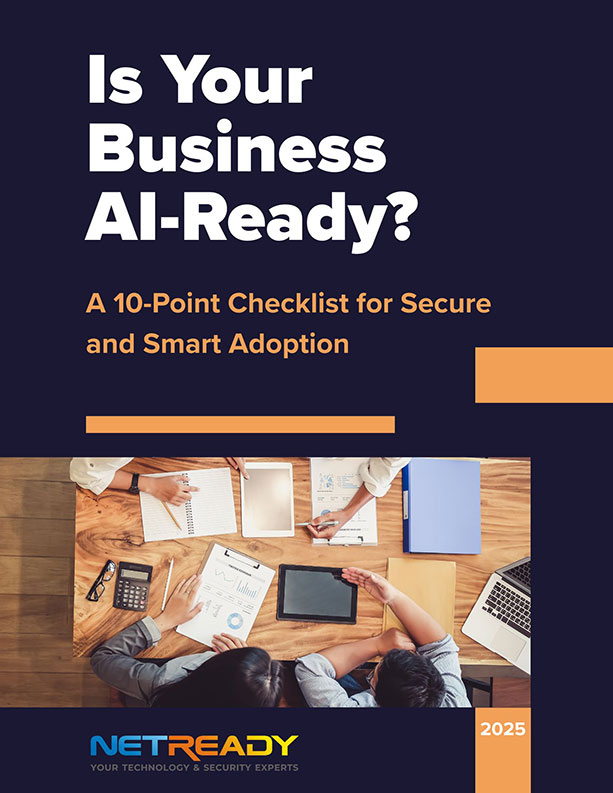
By Zac Abdulkadir, President and CEO of Netready
In the financial services sector, where a single disruption can cascade into millions in losses and eroded client trust, ransomware has emerged as a formidable threat. Attacks on banks, investment advisors, and institutions have surged, with cybercriminals exploiting vulnerabilities to encrypt data and demand ransoms—often targeting sensitive financial records protected under FINRA and SEC regulations. I've guided numerous firms through these crises. As the author of From Exposed to Secure, I emphasize that resilience isn't about if an attack happens, but how quickly you recover. In this post, we'll explore prevention and recovery strategies tailored for financial services, helping you safeguard assets and comply with stringent rules without the overhead of in-house expertise.
Understanding Ransomware Threats in Financial Services
Ransomware evolves rapidly, with variants such as LockBit and Conti tailored to infiltrate financial networks through phishing, unpatched software, or supply chain vulnerabilities. Financial firms are prime targets due to high-value data they hold—think client portfolios, transaction histories, and NPPI (non-public personal information)—making downtime catastrophic. Under SEC Regulation S-P, firms are required to protect this data, while FINRA Rule 4370 mandates the implementation of robust business continuity plans (BCPs) to mitigate disruptions. Non-compliance can result in fines exceeding millions, as seen in recent enforcement actions.
As a member of the FBI's InfraGard program, I've collaborated on defending critical infrastructure. The statistics are alarming: ransomware incidents in the finance sector have risen, with average recovery costs exceeding seven figures, including lost productivity and reputational harm. Internal factors, like employee errors or insider threats, compound the risk, especially in hybrid work environments common among advisors. Building resilience starts with recognizing these vectors and implementing layered defenses to align with regulatory demands.
Key Pillars of Ransomware Prevention and Recovery
To fortify against ransomware, financial institutions must erect a comprehensive framework. Here are the essential pillars:
- Proactive Threat Detection: Deploy 24/7 SIEM (Security Information and Event Management) and intrusion prevention systems to spot anomalies early. Regular vulnerability scanning identifies exploitable gaps, ensuring alignment with FINRA's annual BCP testing requirements.
- Data Backup and Isolation: Maintain immutable, off-site backups with air-gapped storage to prevent encryption. Test restores quarterly to comply with SEC data redundancy mandates, minimizing recovery time objectives (RTOs).
- Access Controls and Segmentation: Enforce least-privilege access, multi-factor authentication (MFA), and network segmentation to contain breaches. This is crucial for protecting client data under PCI-DSS for payment processing in banks.
- Incident Response Planning: Develop and drill response protocols, including forensic tools and communication plans for SEC's 72-hour breach disclosure rule. Include ransomware negotiation strategies, though payment is discouraged due to legal risks.
By incorporating these measures into their operations, firms can significantly reduce the success rates of attacks. At Netready IT, our managed security services deliver these pillars through proactive monitoring, helping financial clients avoid the pitfalls of reactive IT.
Strategies for Implementing Ransomware Resilience
Crafting a resilient posture requires a step-by-step approach. Begin with a free cybersecurity risk assessment to map vulnerabilities—Netready offers this confidentially, pinpointing risks like outdated endpoints common in financial setups. Follow up with penetration testing to simulate attacks, revealing weaknesses before hackers do.
Employee training is non-negotiable; tailor sessions to finance-specific scenarios, such as spotting phishing emails mimicking wire transfer requests, aligning with FINRA's continuing education standards. Integrate endpoint detection and response (EDR) tools for real-time threat hunting, and adopt zero-trust architectures to verify every access attempt.
For recovery, prioritize rapid isolation and restoration. Use cloud-based disaster recovery solutions for scalable failover, ensuring business continuity without data loss. Our vCSO (Virtual Chief Security Officer) service provides expert guidance, crafting customized plans at fixed monthly rates—ideal for small to medium-sized banks and advisors seeking enterprise-level protection without long-term contracts.
Case Studies: Real-World Ransomware Defenses in Finance
Netready IT has empowered financial clients to rebound stronger from threats. A boutique investment advisor we supported faced a ransomware attempt via a compromised vendor. Our 24/7 SIEM detected it early, isolating the infection and restoring from backups within hours—preventing any client data exposure and ensuring FINRA compliance.
In another case, a community bank recovering from a partial encryption adopted our backup and recovery package. We implemented immutable storage and regular drills, slashing their RTO from days to minutes. This not only met SEC disclosure timelines but also boosted their audit scores, allowing focus on growth amid regulatory pressures.
These successes, inspired by my InfraGard insights, show that proactive strategies turn potential disasters into manageable events, preserving trust in finance where every second counts.
Overcoming Common Challenges
Financial firms often face challenges such as budget constraints, legacy systems, and evolving ransomware tactics. High recovery costs deter investment, while integrating new tools with old infrastructure risks compatibility issues.
To navigate these:
- Leverage Affordable Outsourcing: Partner with MSPs like Netready for cost-effective, no-contract solutions, accessing certified experts without hiring overhead.
- Prioritize Scalable Tech: Start with cloud migrations for flexible backups, addressing legacy vulnerabilities while maintaining PCI-DSS compliance.
- Foster Continuous Adaptation: Conduct regular audits and threat intelligence updates to stay ahead of variants, building a culture of vigilance.
By addressing these proactively, institutions can achieve enduring resilience, minimizing financial and reputational impacts.
The Path Forward: Partnering for Protection
Building ransomware resilience is essential for thriving in the financial services sector, and with the right support, it's within reach. At Netready, we specialize in providing tailored solutions for banks and advisors, ranging from complimentary risk assessments to comprehensive managed recovery services.
Ready to fortify your firm? Contact us for a no-obligation consultation. Please call our Pasadena office at (213) 463-2100 or our Inland Empire location at (951) 530 -3700.
Lets Discuss Your IT Strategy
 Call Us Today 213-463-2100
Call Us Today 213-463-2100
Book a Free Consultation.

Zac Abdulkadir
President and CEO of Netready
With a career spanning more than 25 years, Zac Abdulkadir
is a recognized authority in cybersecurity and IT compliance,
dedicated to protecting businesses from evolving threats.

 310-553-3055
310-553-3055 213-463-2100
213-463-2100
